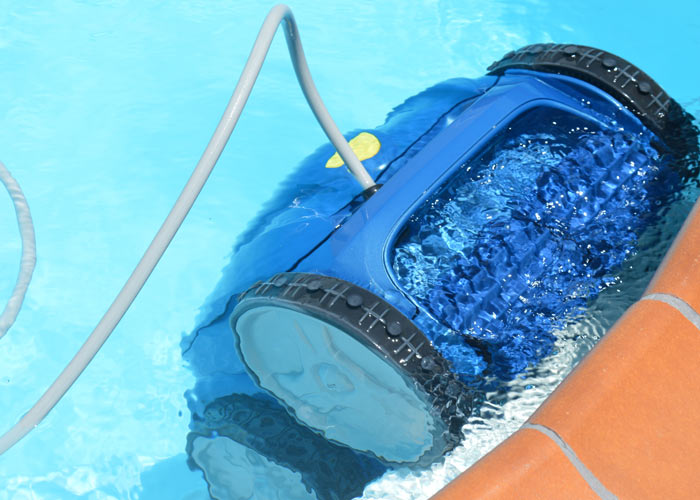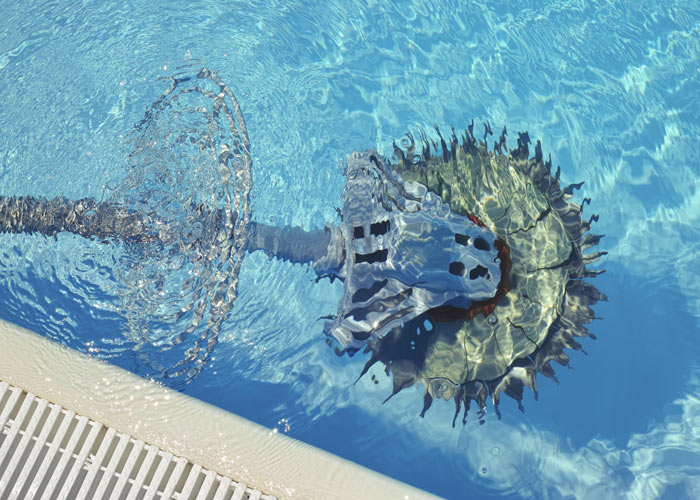A swimming pool is almost synonymous with fun and exuberance, but behind the scenes, a lot of cleaning is needed to keep it sparkling clean. We don’t need to discuss why a swimming pool needs cleaning because it’s self-explanatory. A clean environment, in general, makes it less likely to be a breeding ground for diseases and infections.
But let’s get back to the subject at hand. Swimming pool maintenance used to be insanely difficult and could punch a hole in your wallet. Well, for what it’s worth, it still is if you rely on professional pool cleaning services to clean your swimming pool periodically.
Fortunately, the swimming pool gods sent us a viable solution that is both functional and cost-effective in the long run. If you still don’t know what I’m talking about, I’m referring to the robotic pool cleaner.

Pool Cleaner Categories
Actually, automatic pool cleaners have been around for decades already. Thankfully, it has improved from bulky unsophisticated machines to almost irreplaceable machines in the subject of pool cleaning.
The three main types of pool cleaners are:
- Suction-side Cleaners
For suction cleaners, the pool’s circulation pump system is its instrument. When it cleans, it uses the pool pump to imbibe the debris and could potentially overload the pool skimmer’s resources. Of course, the impact does not happen instantaneously, but this is something pool owners need to be aware of.
- Pressure-side Cleaners
This type of cleaners does not use the pool’s built-in filtration system in a way that suction cleaners do, but it still depends on it a little bit. Although it has its own debris packet, they loosen some of the hard-to-remove grime and rely on the filtration system to flow them out of the pool.
The drawback of pressure-side cleaners is that they may require an installation of a booster pump. Some models do not need this, but typically, it does. Again, as a pool owner, this is something that you need to consider.
- Robotic Pool Cleaners
While pressure and suction cleaners are all serviceable machines, a robotic pool cleaner is the real deal when we’re talking about pool maintenance. The former relies on the pool’s built-in filtration system in one way or another, but a robotic cleaner is a standalone machine that functions independently.
The best part of the robotic pool cleaners is their state-of-the-art features. Some models have smart navigation technology, anti-tangle swivel cords, sensors, heavy-duty brushes, and robust wall-climbing characteristics that are unparalleled by older types of automatic cleaners.
Yes, you will need to make a considerable initial investment, but that trumps all the savings you can accumulate in the long run. Consider why:
- Robotic pool cleaners conserve money in the long run because it consumes a lot less electricity.
- Because of their efficient and thorough cleaning capabilities, there is less need for backwashing or water replacement. These, too, cost a lot of money!
- They reduce usage of pool chemicals. If your pool is well-maintained by robotic cleaners, there would be less of a need for pool shocking or adding chlorine and other compounds.
Of course, it’s not an easy decision to pick a robotic cleaner. But taking all these things into account, it would be a travesty not to even consider purchasing one if you’re a pool owner. To point you in the right direction, this review about the Dolphin Premier could be just the boost you need.
How Does A Robotic Pool Cleaner Operate?
We have touched a bit of this in the previous section, but let’s get into that in more detail this time around.
A robotic pool cleaner is a compact, cutting-edge machine that trudges in the floors on your pool, cleaning them with brushes. To do this, you simply plug the appliance in an outlet, submerge it, and leave it out in the pool during the cleaning cycle.
These automated cleaners are no dummies when it comes to picking up debris– whether it’s as big as a twig, as small as pebbles, or as invisible as grime. Some models are equipped with state-of-the-art sensors that enable them to navigate the entire pool, including sharp corners, with ease. What’s more, they could map and “memorize” the outline of the pool floor so that they could do the cleaning cycles much more quickly and efficiently the next time.
As we have mentioned, a robotic pool cleaner works independently and does not need the pool’s built-in filtration system as much as the other type of pool cleaners. It has a suction system that pulls in water, then it uses its own filtration system to clean and push the water back into the pool. This process acts as a propulsion system that allows the cleaner to move effortlessly as it manoeuvres its way across the pool. At the same time, as it propels itself in the pool, the brushes work frantically to clean the floors, walls, and steps. Of course, different models also differ in overall efficiency as some are just plain better than others.

What about its energy consumption?
Robot cleaners are powered by motors that are efficient and save a lot of energy. In fact, it is estimated that it uses 83% less energy than the other type of pool cleaners. It only draws as much as 180 watts in a cleaning cycle compared to over 1 kW of energy in cleaners powered by a booster pump.
Does a robotic pool cleaner come with more features?
Yes, it absolutely does! For example, some features include multiple cleaning modes and a remote control mode that enables you to control the cleaner where it goes. Additionally, some models allow scheduled cleaning and integration over a smartphone app.
How much human intervention does it need?
As less as it can be, like the way it should.
Of course, the unit does not make itself go into the water. You have to prepare it, make sure there are no obstructions, plug it into the outlet, and submerge it into the water. Some models have indicators to let you know if the filter basket needs to be cleaned out, and that’s a part of your job. Lastly, you need to lift the unit out of the water after its cleaning cycle and get it all cleaned up before safely putting it away.
Robotic Pool Cleaner Basic Care and Maintenance
All working parts of the cleaner need to be cleaned. Because the unit is dunked in the water for three or more hours, it is probably soaked in chlorine and other chemicals for too long. Pool chemicals could accelerate the degradation of the parts.
It is also not recommended to leave the unit in the pool after its cleaning cycle as much as you don’t want your vacuum cleaner out in the living room after using it. It may also cause degradation of the robotic cleaner’s working parts.
Lastly, you may need to replace the brushes as often as it needs. The brushes are the feverish workers of the whole unit, and they could wear out quickly. Granted, most models are easy enough to assemble and disassemble that you can do simple maintenance and replacement stuff all by yourself.
The Bottom Line: How A Robotic Pool Could Help You
Robotic cleaners are lifesavers, timesavers, and money savers as far as pool owners are concerned. That is why a robotic cleaner that fits your needs is a superb initial investment that you won’t regret.
Because of its features and simplicity of use, you don’t need much to get it up and running. It essentially does all the work for you! Simply plug the machine into the outlet, submerge it into the water, and let it go berserk for three hours. The result is a sparkling clean swimming pool without breaking a sweat.
Naturally, as in the case of many working appliances, you need to keep the robotic cleaner in tip-top condition so you can use it for many years. It is advisable to take it out of the pool after use, clean the working parts to get rid of grease and chemicals and store it safely. The brushes are usually the first component to wear out, so check if you have to replace them.




